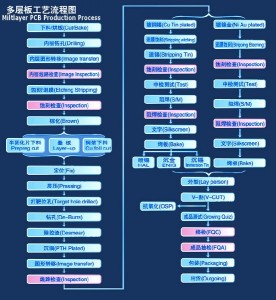People Who engaged in printed circuit board processing, will be understanding: PCB outline processing is one of the difficulties of the whole PCB processing , most PCBS ARE a rectangle outline, but also a considerable number of PCB with special outline.
Please see the below four PCB outline processing methods:
1. Milling outline: PCB outline processing by CNC milling machine, we should be provides the data of outline and the corresponding hole, and it will be input by programmer. As not so much distance between PCB puzzle, usually about 3mm, so mills generally 3mm in diameter, or 2.4mm. First milling drill hole on the plate, then fixed the PCB and plate, last milling outline.
2. Punching outline: Need to setup mold, then punching outline, correspond the PCB positioning pin and the positioning hole, generally choosing 3.0mm hole as positioning hole.
3. Open “V” groove: Using “V” groove cutting machine along the PCB design “V” slot cut into the PCB parts connected to each other;
4. Drill outline: Using drill machine to drill holes through outline. Normally open “V” groove and drill only for processing assistance.
CMD Circuit specilizing in making high quality printed circuit boards and flexible circuits. Please contact us to know more.
